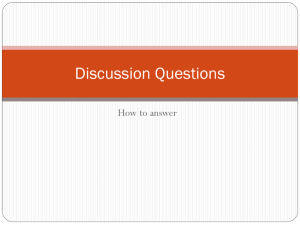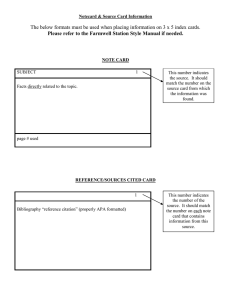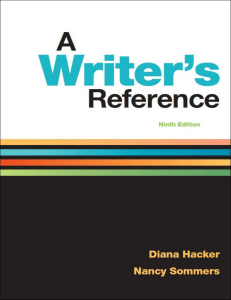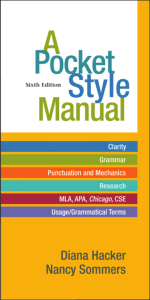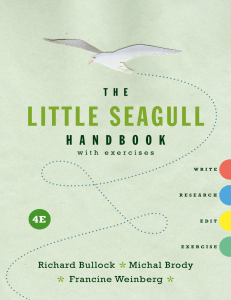EDITORIAL 35 Basics
advertisement
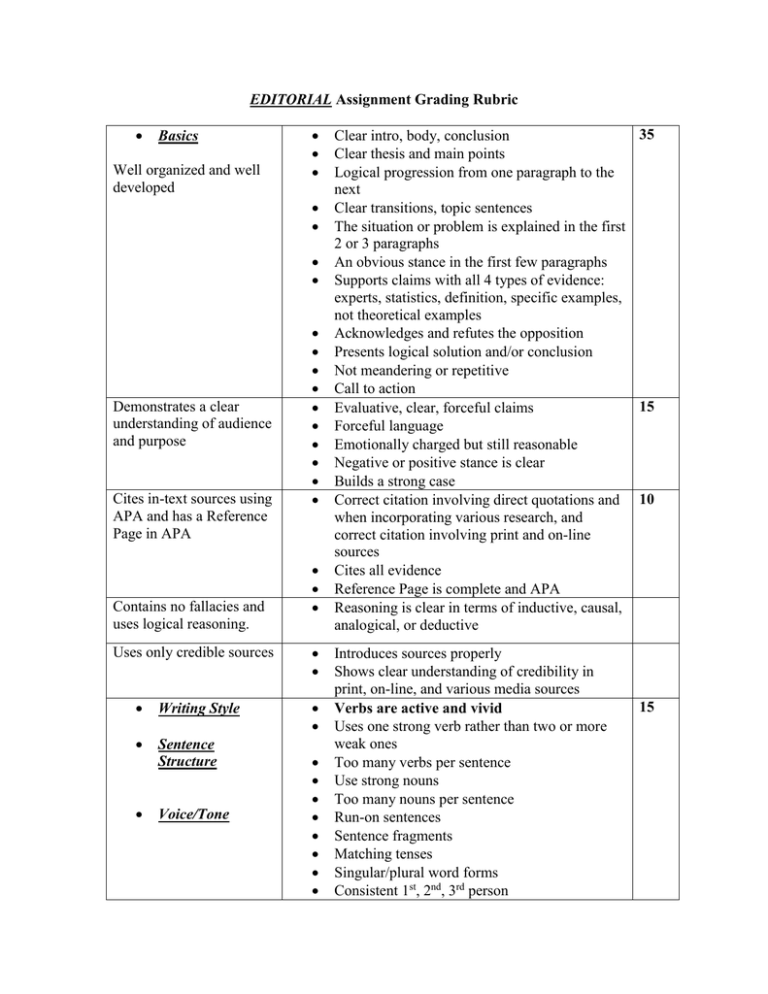
EDITORIAL Assignment Grading Rubric Basics Well organized and well developed Demonstrates a clear understanding of audience and purpose Cites in-text sources using APA and has a Reference Page in APA Contains no fallacies and uses logical reasoning. Uses only credible sources Writing Style Sentence Structure Voice/Tone 35 Clear intro, body, conclusion Clear thesis and main points Logical progression from one paragraph to the next Clear transitions, topic sentences The situation or problem is explained in the first 2 or 3 paragraphs An obvious stance in the first few paragraphs Supports claims with all 4 types of evidence: experts, statistics, definition, specific examples, not theoretical examples Acknowledges and refutes the opposition Presents logical solution and/or conclusion Not meandering or repetitive Call to action 15 Evaluative, clear, forceful claims Forceful language Emotionally charged but still reasonable Negative or positive stance is clear Builds a strong case Correct citation involving direct quotations and 10 when incorporating various research, and correct citation involving print and on-line sources Cites all evidence Reference Page is complete and APA Reasoning is clear in terms of inductive, causal, analogical, or deductive Introduces sources properly Shows clear understanding of credibility in print, on-line, and various media sources Verbs are active and vivid Uses one strong verb rather than two or more weak ones Too many verbs per sentence Use strong nouns Too many nouns per sentence Run-on sentences Sentence fragments Matching tenses Singular/plural word forms Consistent 1st, 2nd, 3rd person 15 Passive voice Appropriate apostrophe, quotation mark usage Improper use of prepositions Verb form “to be” Vague pronouns: “it,” “they,” “there,” “this,” etc. Starting a sentence with “it” Hanging quotation marks Wordiness Ending a sentence with a preposition (of, which, to, in, for, etc.) Avoids clichés Spelling and punctuation Subject verb agreement Better word choices other than “thing,” “nice,” “good,” etc. No redundant words, phrases, or ideas Inappropriate capitalization Tight, concise writing

